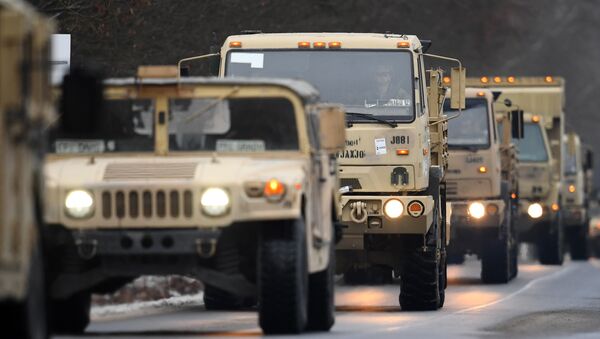“The US has made it clear no final decision has been made on how and when,” NATO Secretary-General Jens Stoltenberg said at a news conference on Tuesday, as reported by Stars and Stripes. The NATO chief expressed that he had spoken with Trump last week, prior to the US president’s statement on the nearly 10,000-troop pullout.
“I don’t think anything has been set in concrete yet,” US Ambassador to NATO Kay Bailey Hutchison also said to reporters on Tuesday.
The NATO officials’ comments come just a day after Trump declared that the US’ troop deployment in Germany would be scaled back to 25,000 service members. According to the US president, Berlin has been “delinquent in their [defense] payments to NATO” and has not contributed enough to justify the current American troop presence in Europe.
"Why should we be doing what we’re doing if they don’t pay?” he asked on Monday during a roundtable discussion with administration officials.
The payments referenced by Trump refer to NATO’s established defense spending target. While the agreement aims for allied countries to spend at least 2% of their gross domestic product (GDP) on defense, Berlin spent an estimated 1.4% of its GDP on the Bundeswehr, its armed forces, in 2019.
It’s worth noting that the agreement, which has a 2024 deadline, is not binding.
According to the Washington Post, 34,500 US troops are currently stationed in Germany. However, the Wall Street Journal highlighted that American forces in the country can total as many as 52,000 troops, depending on unit rotations and whether training exercises are taking place. The Journal further noted that Trump’s removal order would limit the number of US troops in Germany at any given time to 25,000.
Trump’s decision to cut around 9,500 troops from Germany was first reported last week by the Journal, which noted that Trump had instructed the Pentagon to “remove thousands of American troops from Germany by September.”
“My message was the US presence in Europe was good for Europe, but also good for North America and the United States,” Stoltenberg said on Tuesday of his efforts to persuade Trump to keep US forces in place. If seen through, the pullout would be the largest service member reduction in Europe in nearly a decade, according to Stars and Stripes.
The US president’s plan has drawn criticism from GOP lawmakers. A total of 22 Republican members of the House Armed Services Committee issued an open letter to Trump, urging the US president to reconsider removing almost 10,000 US troops from Europe.
“In Europe, the threats posed by Russia have not lessened, and we believe that signs of a weakened US commitment to NATO will encourage further Russian aggression and opportunism,” Rep. Mac Thornberry (R-TX) and the 21 other lawmakers expressed in the June 9 letter to Trump.
“In addition, the overall limit on troops would prevent us from conducting the
exercises that are necessary for the training and readiness of our forces and those of our allies.”
Stoltenberg asserted on June 16 that despite Trump’s allegations of Berlin owing NATO, Germany and many other alliance members “are actually delivering” and have funneled more government money into their respective militaries in recent years.


